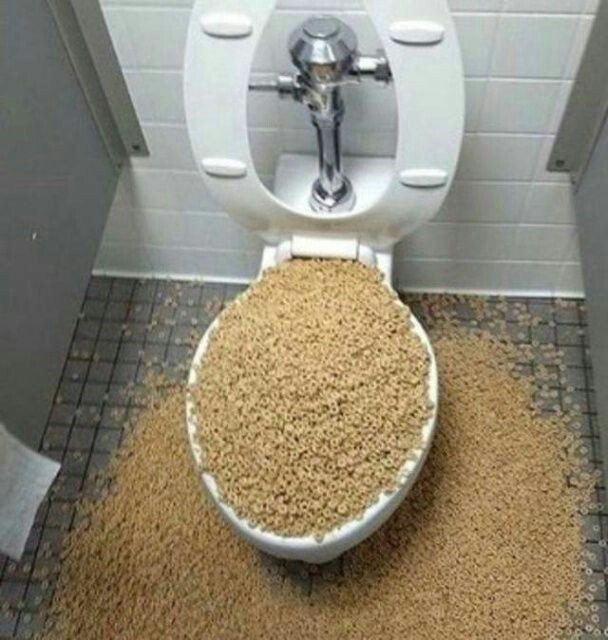Every person has got his or her own piece of advice in relation to What Can Happen If You Flush Food Down the Toilet?.

Introduction
Many individuals are often confronted with the dilemma of what to do with food waste, specifically when it pertains to leftovers or scraps. One common concern that develops is whether it's alright to purge food down the commode. In this post, we'll delve into the reasons that people may take into consideration flushing food, the consequences of doing so, and alternate approaches for correct disposal.
Reasons why people might take into consideration purging food
Absence of recognition
Some individuals may not be aware of the prospective damage caused by purging food down the toilet. They may mistakenly believe that it's a harmless method.
Convenience
Purging food down the toilet might look like a quick and easy option to dealing with undesirable scraps, especially when there's no close-by garbage can readily available.
Negligence
In some cases, people might simply pick to flush food out of sheer laziness, without taking into consideration the repercussions of their actions.
Repercussions of flushing food down the toilet
Environmental impact
Food waste that ends up in waterways can contribute to contamination and damage water ecological communities. Additionally, the water made use of to purge food can stress water resources.
Pipes problems
Purging food can result in stopped up pipes and drains, triggering costly pipes fixings and hassles.
Types of food that ought to not be flushed
Coarse foods
Foods with fibrous appearances such as celery or corn husks can get entangled in pipelines and create blockages.
Starchy foods
Starchy foods like pasta and rice can take in water and swell, leading to obstructions in pipelines.
Oils and fats
Greasy foods like bacon or food preparation oils must never ever be flushed down the toilet as they can strengthen and trigger clogs.
Proper disposal methods for food waste
Utilizing a garbage disposal
For homes outfitted with waste disposal unit, food scraps can be ground up and flushed through the pipes system. However, not all foods appropriate for disposal in this manner.
Recycling
Specific food packaging products can be reused, decreasing waste and minimizing environmental effect.
Composting
Composting is a green means to throw away food waste. Organic products can be composted and utilized to enhance dirt for horticulture.
The importance of proper waste management
Lowering ecological harm
Appropriate waste monitoring practices, such as composting and recycling, aid minimize pollution and preserve natural resources for future generations.
Securing pipes systems
By avoiding the practice of flushing food down the commode, house owners can protect against costly plumbing fixings and maintain the stability of their plumbing systems.
Verdict
Finally, while it might be appealing to purge food down the commode for ease, it is essential to recognize the prospective consequences of this action. By taking on correct waste management practices and getting rid of food waste responsibly, people can add to much healthier plumbing systems and a cleaner atmosphere for all.
FLUSH FOOD DOWN THE TOILET?
FLUSHING FOOD CAN CAUSE BLOCKED DRAINS IN YOUR HOME
All of the plumbing fixtures in your home are connected to the same sewer pipe outside of your home. This outdoor sewer pipe is responsible for transporting all the wastewater from your home to the Council sewer mains. Even small pieces of food that go down the kitchen sink can cause problems for your sewer. It should therefore be obvious that flushing larger bits of food, such as meat, risks a clog in either the toilet itself or the sewer pipes. Flushing greasy food is even more problematic because oil coagulates when it cools, coating the interior lining of your pipes.
THE TOILET IS NOT A BIN
Food isn’t the only thing that people shouldn’t be flushing down the toilet. People use the toilet to dispose of all kinds of things such as tampons, makeup wipes, dental floss, kitty litter and even underwear. Water goes to great lengths to educate residents about the high costs and stress placed on wastewater treatment systems simply from people flushing the wrong stuff down the toilet. It costs taxpayers millions of dollars each year, and homeowners thousands in blocked drain repairs.
FLUSHING FOOD IS A WASTE OF WATER
Flushing food is a waste of our most precious resource - water. In June this year Level 1 water restrictions were introduced to protect water supply from drought conditions. Much of New South Wales continues to be affected by prolonged drought with recent figures revealing up to 97 per cent of the state remains in drought. Depending on whether you have a single or dual flush toilet, every single flush uses between five and 11 litres of water. In the current climate this is a huge amount of water to be wasting on flushing food that should be placed in the bin (or better yet, the compost).
https://www.jabplumbingsolutions.com.au/blog/can-you-flush-food-down-the-toilet

We hope you liked our article on What Can Happen If You Flush Food Down the Toilet?. Thank you for taking a few minutes to read our piece. Sharing is nice. You won't know, you may just be helping someone out. I praise you for your time. Please stop by our website back soon.
Click Here